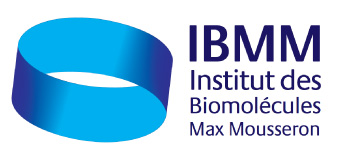Photofunctional supramolecular sytems, from nanomachines to micro-domains
Séminaire Chimie IBMM & ED459
Dr. Nathan D.
Le Vendredi 10 Décembre 2021 à 11h30
UM FdS, Salle de Cours SC-36.08 (campus Triolet, bât. 36 1er étg)
Date de début : 2021-12-10 11:30:00
Date de fin : 2021-12-10 12:45:00
Lieu : UM FdS salle SC-36.08 (Triolet bât. 36)
Intervenant : Dr. Nathan D.
ISM Institut des Sciences Moléculaires, UMR 5255, CNRS, Université de Bordeaux
Co-authors : Gediminas
Judicious combinations of functional redox- and photoactive molecular sub-units can give rise to designer multicomponent architectures with predetermined properties.
In this context, several examples of photoactive supramolecular systems and design principles will be described, which have been developed in Bordeaux in recent years, taking advantage of programmed fast electron and/or energy transfer. Such processes have been followed via time-resolved spectroscopies and microscopies.
Firstly, ring-on thread rotaxane (and pseudorotaxane) architectures will be discussed, which are leading components in artificial molecular machines and offer well-defined nanometric platforms to study photoinduced processes, and in turn obtain information on and/or promote assembly/disassembly, sub-molecular ring movement, etc.[1] Recently, approaches have further been extended down to single molecule fluorescence studies.
Secondly, photoprocesses including electron transfer at the molecular level are shown to be translated into programmable rupture of cell-sized vesicles, with particular emphasis on self-assembled polymersome capsules.[2] As a result, photoliberation of molecular cargo in pseudo-physiological conditions can be achieved. Snapshots of a real-time prototype micrometric polymersome explosion under irradiation is shown in the Figure. This simple and versatile mechanism is being adapted to a wealth of hydrosoluble dye molecules and offers high spectral and spatio-temporal control.
[see illustration in attached PDF abstract]
Figure 1. Snapshots of a photodriven polymersome explosion under irradiation at 488 nm (confocal fluorescence microscope observation, each frame is separated by 70 ms; scale bar is 10 µm).
References
1. S. Yu, et al, Damming a molecular energy reservoir: ion-regulated electronic energy shuttling in a [2]rotaxane, Chem. Sci. 2021, 12, 9196–9200.
2. A. Peyret, E. Ibarboure, A. Tron, L. Beauté, R. Rust, O. Sandre, N. D. McClenaghan, S. Lecommandoux, Angew. Chem. Int. Ed. 2017, 56, 1566–1570.
This work has been financially supported by the ANR through projects PETMIT, NOSynthCell and TEPEE.
Contact local IBMM : Dr. Frédéric
